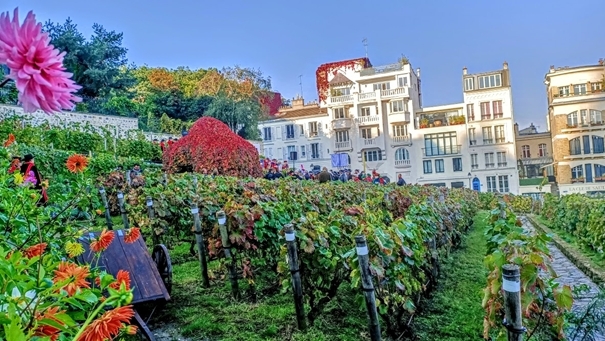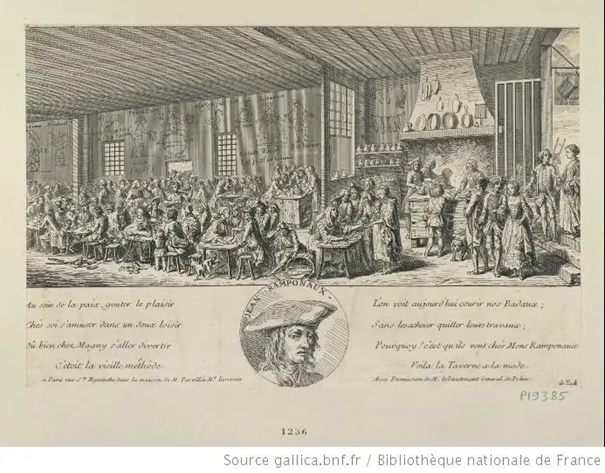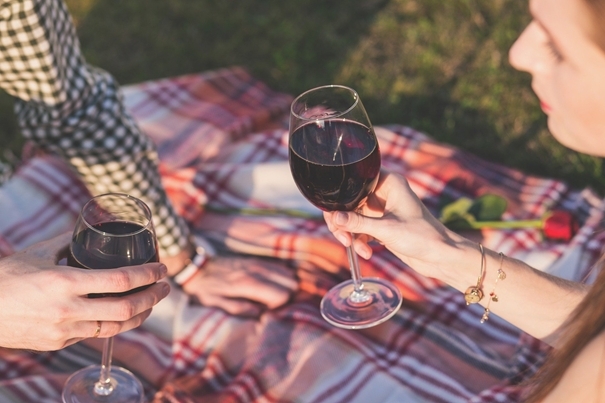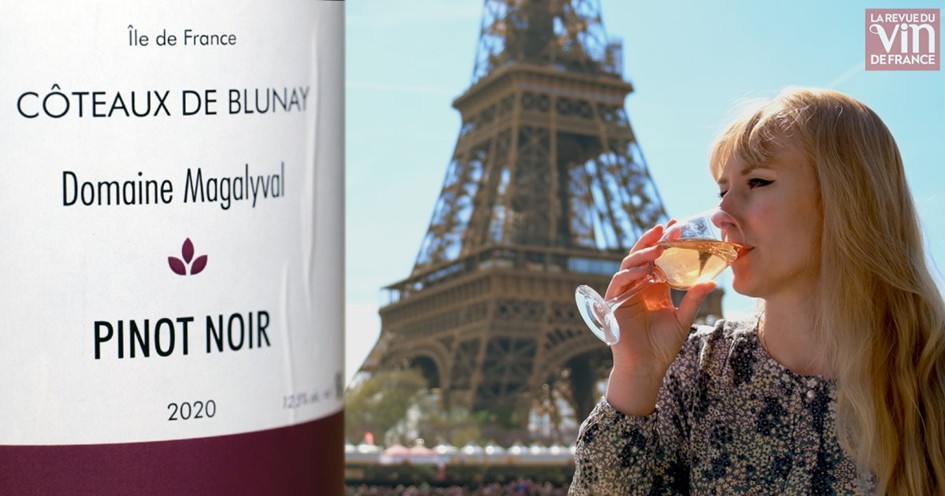The vineyard of Île-de-France is in full renaissance. And now recognized in IGP since the harvest 2020. An unexpected rebirth and long-awaited recognition.
Brief history

Like the great vineyards of Burgundy, Champagne, Bordeaux, of the Loire or the Rhône Valley, the Île-de-France has carried in the past one of the most important vineyards in France.
It is a forgotten reality, like many other vineyards of France today disappeared, the vineyard of Île-de-France has long been a renowned wine land.
The first vines were planted in Lutèce in 276. The vine acclimatized very well to the Parisian climate and the wines produced at the time were of good quality. In 357, Emperor Julien himself praised the wine produced on the hill of Montmartre. Lutetia (Roman name of Paris) became one of the most important wine regions of Romanized Gaul.
It is in the Middle Ages that the cultivation of the vine in Paris knows its true rise thanks to the work of the monks. Three abbeys are at the head of the main vineyards: Saint-Denis, Saint-Germain-des-Prés and Montmartre.
Wine is a significant source of income for bishops and princes. The Paris region then became the largest vineyard in Europe.
The very old and great vineyard of Argenteuil produced excellent wines that had the favor of the kings of France. Parisian viticulture favoured the grape varieties of the pinots family, such as fromenteau and morillon, which gave the best wines in this climate.
It was in the 13th century, thanks to an edict issued by Saint Louis, King of France, prohibiting taverns from selling wine produced in the capital, that wine exports developed. Renowned for its good quality, Paris wine is transported to other regions of France and even in northern Europe.
The Parisian vineyard then reached its peak. It occupies 42,000 hectares and concerns more than 300 municipalities in the region. In the 19th century, on the eve of the arrival of phylloxera (1863), it occupied 50,000 ha.

However, in the 19th century, vine diseases developed and the quality of the grapes decreased. With the urban development and that of the working class, demanding of simple wines, the quality of wine decreased.
The Phylloxera Disaster – a small aphid imported from North America to France in 1863, responsible for the devastating destruction of almost the entire European vineyard at the end of the 19th century and which has now colonized almost every vineyard in the world – caused the disappearance of grape varieties and ancestral vineyards[1].
We will never know what the taste of pre-phylloxera wines was : ((
[1] “The history of agriculture has never kept us, at any time and for any other cultivated plant, the memory of a crisis as serious as that crossed by the vines of the old continent when they were invaded by the phylloxera.” Gustave Foëx, French ampelographer, 1900.

Today, a century later, after their virtual disappearance, the wines of Île-de-France are reborn through an IGP, the IGP Ile-de-France.
In 1999, wine, vine and French lifestyle enthusiasts decided to work on the revival of professional viticulture in Île-de-France.
On May 19, 2020, the INAO (National Institute of Origin and Quality) accepted the approval of the specifications of the IGP.
After twenty-one years of work for the revalorization of the Île-de-France vineyard, winemakers located in the Paris basin can use the mention IGP Île-de-France since the 2020 harvest. It is the result of many years of work for the revival of what was once the “first vineyard in France”.
The territory of the IGP Île-de-France has about forty professional farms, for a hundred hectares planted or in the process of planting.

Recently, “La Revue du vin de France”, in partnership with the newspaper “Le Parisien” and the radio station Europe 1, organized a tasting of fourteen wines recognized in IGP Île-de-France to know the level.
Fourteen wines of this renaissance production were tasted. Report.
The winner of this tasting was the estate “Les Coteaux du Montguichet”, in Chelles, Seine-et-Marne, which seduced the jury in both white and red. His Chardonnay “Le Vallon” 2021 was elected best white of the tasting, with an elegant side and a delicate and well integrated woody. His red wine “Le Faucon” 2021 also came out among the best vintages. It is a pinot noir of barely 11.5° of alcohol, floral and digestible, firmer and tighter than white nonetheless.
The Domaine “La Bouche du Roi”, located in Davron, on the plain of Versailles, located in Davron, on the plain of Versailles, has produced a beautiful effect with the quality of its Pinot Noir – subtly integrated tannins and undergrowth notes.
Its Merlot cuvée “Les Trois Corneilles” 2020 made a good impression. “An œnological care reminds the right bank of Bordeaux, the Libournais and Saint-Emilion, with this suppleness of the tannins under barrel and its fruity side”.
In white, the chenin, very delicate and complex, with its citrus freshness, did wonders on creamy goat cheeses.
The estate was immediately positioned on a fairly high-end and ambitious niche, as evidenced by the tasting, but also the choice of organic farming, manual harvesting, low yields or fermentation in Burgundy barrels. The result is rather high prices – 27 euros per cuvée – which confirm that these are wines of great opportunities that will cross the years.
Other Domain, the “Clos du Pas Saint Maurice” and its white cuvée of Coteaux de Suresnes 2020 has pleasantly surprised. The fresh, straight and stretched side dedicates it to an aperitif, or to the beginning of a meal. It is not at the level of a good Muscadet or a good Chablis, but it is very interesting, because these are wines that we do not know, elaborated in terroirs that are unknown to us”.
As you can guess, it is still too early to define a style of wines of the IGP Île-de-France because of the multiplicity of grape varieties and terroirs and the too recent establishment of vineyards. The winemakers are still in the experimental phase, even though they are professionalizing themselves. Courage!
Written by Dr. François-Xavier ROLAND-GOSSELIN
Master of History – University of Rennes II
PhD in linguistics and comparative literature – University of Angers – France
Wine Consultant @ BACCHUS GLOBAL

